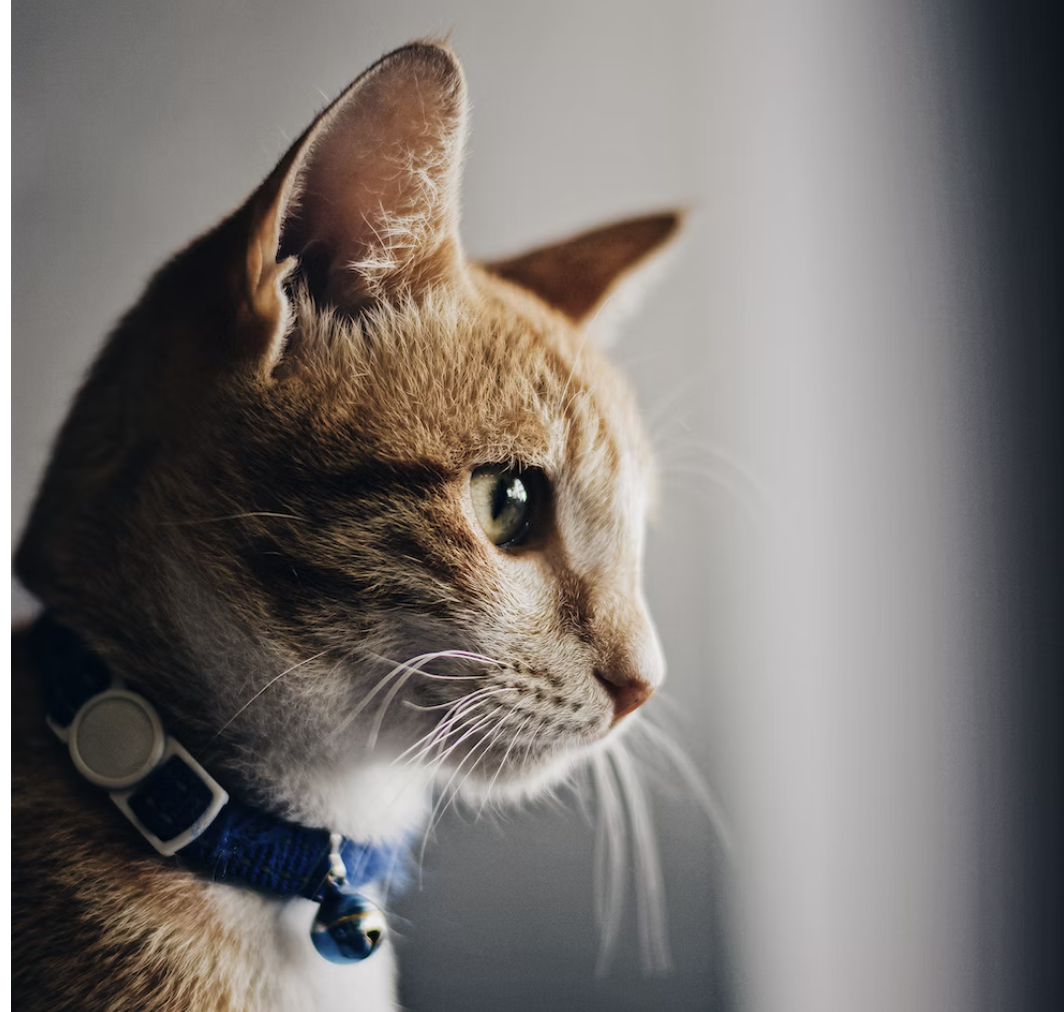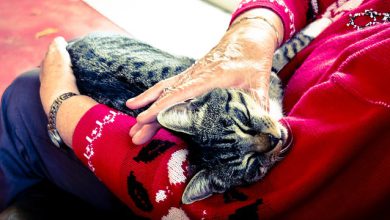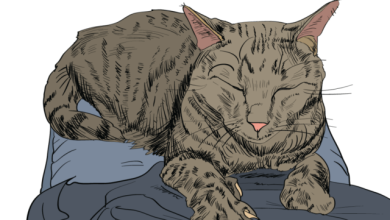
Cats are usually clean animals and love to groom themselves. However, sometimes, they can develop dandruff on their skin and fur. This condition may indicate an underlying problem that requires proper diagnosis and treatment. In this article, we’ll explore the causes of cat dandruff and how to prevent and treat it to keep your kitty healthy and happy.
Understanding Cats & Dandruff
What is dandruff in cats?
Dandruff in cats is a common condition that occurs when dead skin cells are shed from the skin and fur. It can be caused by various factors such as parasites, allergies, dry skin, and nutritional deficiencies.
While it may not seem like a serious issue, it can be uncomfortable for your cat and lead to other skin problems if left untreated. Therefore, it is important to understand the causes of cat dandruff and how to prevent and treat it.
Common causes:
One of the most common causes of cat dandruff is a lack of grooming. Cats require daily grooming to maintain healthy skin and fur. However, if your cat is overweight, has mobility issues, or lacks grooming skills, they may not groom themselves enough, leading to dandruff buildup.
Another cause of cat dandruff is parasites such as fleas, ticks, and mites. These parasites can irritate your cat’s skin, leading to excessive scratching and dandruff. Allergies, especially food allergies, can also cause dandruff. Dry skin caused by low humidity levels, bathing your cat too often, or using harsh grooming products can also trigger dandruff in cats.
In addition to these common causes, there are other factors that can contribute to cat dandruff. For example, certain medical conditions such as hyperthyroidism and diabetes can affect your cat’s skin and fur. Stress and anxiety can also lead to dandruff in some cats.
Differences between dandruff and other skin conditions
Cat dandruff is characterized by flaky skin that easily falls off. Other skin conditions such as ringworm and scabies usually have red, scaly patches of skin. However, only a vet can accurately diagnose any skin condition affecting your cat.
If you notice any changes in your cat’s skin or fur, it is important to take them to the vet for a check-up. Your vet can help determine the underlying cause of the dandruff and recommend the best course of treatment.
Overall, understanding cat dandruff and its causes can help you prevent and treat this common condition, ensuring your cat stays healthy and happy.
Signs and Symptoms of Cat Dandruff
Physical appearance of dandruff
If your cat has dandruff, you’ll notice white, flaky skin on their coat, especially around their neck and tail. Over time, the flakes may get larger and more noticeable. Your cat may also have a dull, lackluster coat.
However, it’s important to note that not all white flakes on your cat’s coat are dandruff. Sometimes, the flakes may be caused by dried saliva, which can indicate an underlying dental issue. Therefore, it’s crucial to consult a veterinarian to determine the root cause of the flakes.
Changes in your cat’s behavior
Cat dandruff can be itchy and uncomfortable for your cat, leading to excessive scratching and licking. If you notice your cat grooming excessively or scratching more than usual, it may indicate a problem.
Moreover, if your cat’s dandruff is caused by an underlying skin condition, such as allergies or parasites, they may exhibit other behavioral changes. For instance, your cat may become more irritable or less active than usual.
More reading: Fatigue in Cats
Other skin issues to watch for
If you notice any redness, swelling, or discharge from your cat’s skin, it may be a sign of infection. If your cat has bald spots or scabs on their skin, it may indicate a more severe skin issue that requires immediate vet attention.
Additionally, some cats may develop oily patches on their skin, which can indicate seborrheic dermatitis. This condition can cause a foul odor and may require medicated shampoos or other treatments to manage.
It’s essential to keep an eye on your cat’s skin and coat health and consult a veterinarian if you notice any changes or abnormalities. Regular grooming, a balanced diet, and proper hydration can help prevent dandruff and other skin issues in cats.
How to Prevent and Treat in Cats
Grooming tips for a healthy cat coat
As a cat parent, it’s important to keep your feline friend’s coat healthy and shiny. One of the most common problems that cat owners face is dandruff. Dandruff in cats is caused by dry skin, poor nutrition, or underlying medical conditions. Fortunately, there are several ways to prevent and treat cat dandruff.
Regular grooming sessions are essential. Brushing your cat’s coat daily can help remove excess dandruff and distribute skin oils. This will not only prevent dandruff but also promote a healthy and shiny coat. If your cat has long hair, trimming it can help prevent matting and tangles that usually trap the excess.
Another way to prevent dandruff is to give your cat a bath with a mild shampoo once a month. This will keep their skin clean and hydrated, preventing dryness and flakiness. However, be careful not to over-bathe your cat as it can strip their skin of natural oils, making the problem worse.
Dietary changes to improve skin health
A well-balanced diet is essential for your cat’s overall health, including their skin and coat. Make sure your cat’s diet contains all the essential nutrients they require for healthy skin and fur. A diet rich in omega-3 fatty acids can help reduce inflammation and moisturize the skin, preventing dandruff. Foods that are high in omega-3 fatty acids include salmon, sardines, and flaxseed oil.
However, before making any dietary changes or adding supplements to your cat’s diet, it’s important to consult with your vet. They can recommend the best diet for your cat’s specific needs and ensure that they are getting all the essential nutrients they require.
When to consult a veterinarian
If you’ve tried grooming your cat and improving their diet, but the dandruff persists, it’s time to see a vet. Your vet can diagnose any underlying conditions that may be causing the dandruff, such as allergies or parasites. They can also recommend suitable treatments such as medicated shampoos, supplements, or prescription medication.
Common Misconceptions About Dandruff
Cat dandruff is a common issue that many cat owners face. It’s essential to understand the facts and myths surrounding cat dandruff to take proper care of your furry friend. Let’s take a closer look at some common misconceptions about cat dandruff.
Is it contagious?
One of the most common misconceptions about cat dandruff is that it’s contagious. However, this is not true. It is not contagious between cats or humans. It’s a common skin condition that can occur due to various reasons, such as poor nutrition, dry air, or skin allergies.
Also see: Ringworm in cats
Can cat dandruff cause allergies in humans?
Another misconception about cat dandruff is that it can cause allergies in humans. While dandruff itself cannot cause allergies, it’s essential to keep your home clean and dust-free, especially if you or anyone in your home has allergies. Regularly vacuuming, washing and changing your cat’s bedding, and keeping their litter box clean can help reduce allergen levels in your home.
Are certain cat breeds more prone to this condition?
Yes, some cat breeds such as Persian and Himalayan cats are more prone to dandruff due to their long, dense coats. However, proper grooming and hygiene can help prevent and treat this condition in any cat breed. Regular brushing and bathing, along with a healthy diet, can improve your cat’s skin and coat health.
It’s also essential to take your cat to the vet regularly to check for any underlying health issues that may be causing the issue. Skin infections, parasites, and hormonal imbalances can also lead to dandruff in cats.
In conclusion, dandruff in cats can be unsightly and uncomfortable for your feline companion. However, with proper grooming, diet, and vet care, you can prevent or treat dandruff and keep your cat’s skin and coat healthy and shiny. Remember, it is not contagious and cannot cause allergies in humans, so there’s no need to worry about it spreading to you or your family.
See more: 6 Tips For Your Cat’s Dry Winter Skin



